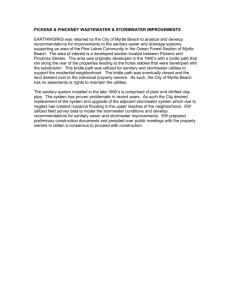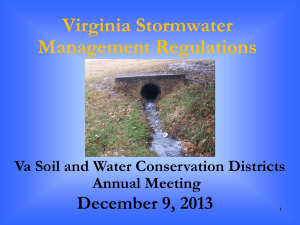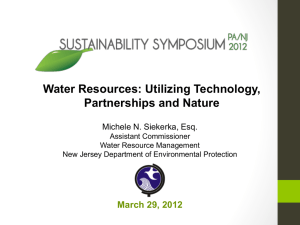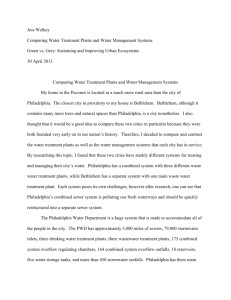Green Stormwater Infrastructure
advertisement
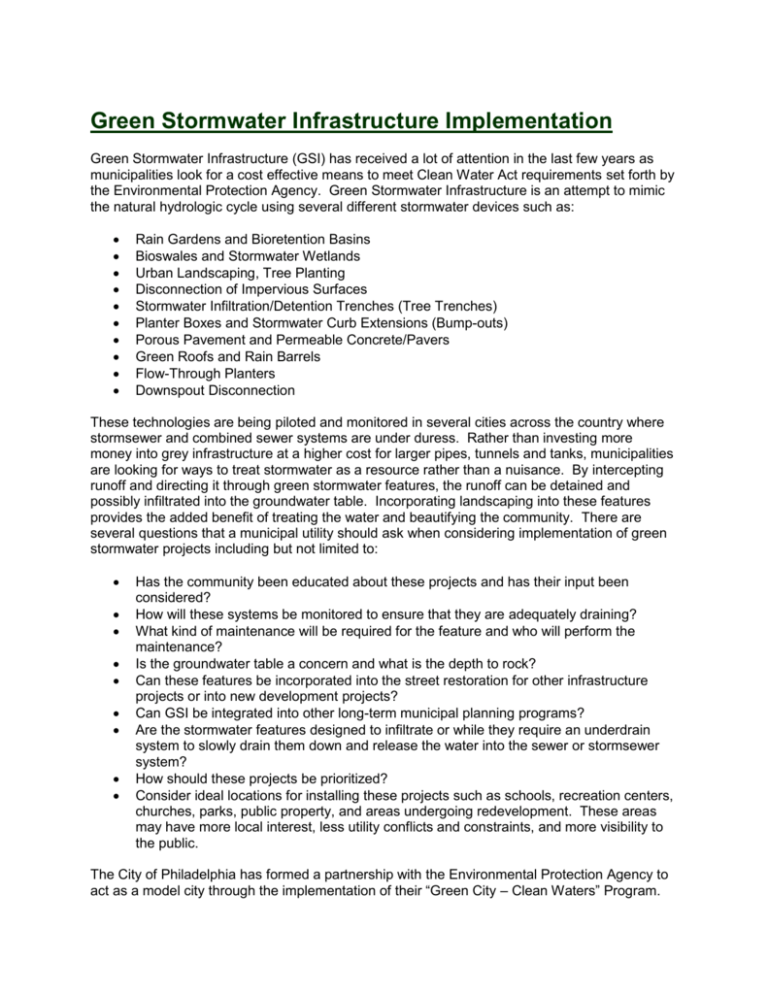
Green Stormwater Infrastructure Implementation Green Stormwater Infrastructure (GSI) has received a lot of attention in the last few years as municipalities look for a cost effective means to meet Clean Water Act requirements set forth by the Environmental Protection Agency. Green Stormwater Infrastructure is an attempt to mimic the natural hydrologic cycle using several different stormwater devices such as: Rain Gardens and Bioretention Basins Bioswales and Stormwater Wetlands Urban Landscaping, Tree Planting Disconnection of Impervious Surfaces Stormwater Infiltration/Detention Trenches (Tree Trenches) Planter Boxes and Stormwater Curb Extensions (Bump-outs) Porous Pavement and Permeable Concrete/Pavers Green Roofs and Rain Barrels Flow-Through Planters Downspout Disconnection These technologies are being piloted and monitored in several cities across the country where stormsewer and combined sewer systems are under duress. Rather than investing more money into grey infrastructure at a higher cost for larger pipes, tunnels and tanks, municipalities are looking for ways to treat stormwater as a resource rather than a nuisance. By intercepting runoff and directing it through green stormwater features, the runoff can be detained and possibly infiltrated into the groundwater table. Incorporating landscaping into these features provides the added benefit of treating the water and beautifying the community. There are several questions that a municipal utility should ask when considering implementation of green stormwater projects including but not limited to: Has the community been educated about these projects and has their input been considered? How will these systems be monitored to ensure that they are adequately draining? What kind of maintenance will be required for the feature and who will perform the maintenance? Is the groundwater table a concern and what is the depth to rock? Can these features be incorporated into the street restoration for other infrastructure projects or into new development projects? Can GSI be integrated into other long-term municipal planning programs? Are the stormwater features designed to infiltrate or while they require an underdrain system to slowly drain them down and release the water into the sewer or stormsewer system? How should these projects be prioritized? Consider ideal locations for installing these projects such as schools, recreation centers, churches, parks, public property, and areas undergoing redevelopment. These areas may have more local interest, less utility conflicts and constraints, and more visibility to the public. The City of Philadelphia has formed a partnership with the Environmental Protection Agency to act as a model city through the implementation of their “Green City – Clean Waters” Program. In this Long Term Control Plan, Philadelphia will use Green Stormwater Infrastructure to solve the cities water pollution and combined sewer overflow problem. Philadelphia plans to spend over $1 Billion over the next 25 years on Green Stormwater Infrastructure to capture drainage from almost 9,600 acres of impervious surfaces within Philadelphia County. By managing the first inch of runoff from any given storm event, the city will drastically reduce the demand on the combined sewer systems which will result in significant reduction in combined sewer overflows into the local streams and rivers. The City of Philadelphia has considered the social, environmental and economic effects of GSI, otherwise known as the Triple-Bottom Line benefits. In addition to the Water Quality Benefit of capturing and treating stormwater, they have factored in Green Job Creation, Carbon Footprint Reduction, Energy Savings, Offset to Climate Change, Air Quality Improvements from mature trees, Ecosystem and Habitat Restoration, Increased Property Values, Increased Community Recreation, Heat Stress Mortality Reduction and Reduced Flooding. Green Stormwater Infrastructure is just one part of an Integrated Watershed Management Program. Depending on the constraints and issues that a municipal utility faces, the following strategies should be considered to solve wet weather problems: Wet Weather Treatment Plant Improvements for High Rate Treatment, Infiltration and Inflow Removal, Stream Habitat Restoration and Fish Passage, Storm Sewer Separation, Storage and Conveyance Tunnels (Grey Features), Flood Relief Projects, Water and Sewer Asset Management.


